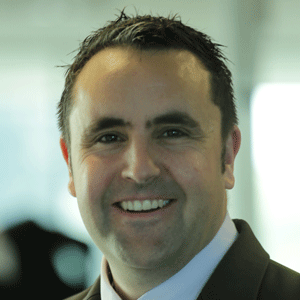THANK YOU FOR SUBSCRIBING

The Next Wave in Software Engineering After CMM
Bill Curtis, SVP & Chief Scientist of CAST & Director of the Consortium for IT Software Quality


Bill Curtis, SVP & Chief Scientist of CAST & Director of the Consortium for IT Software Quality
The benchmark has risen higher for improved quality of software managed by IT organizations which was meant for the benefit of their individual business processes. In turn, the consequent gradual increase has created concerns and unease on this front towards the contemporary IT services industry. In correlation to the problem, the Capability Maturity Model (CMM) through its optimization of processes, from ad hoc practices, to formally defined steps managed result metrics, active optimization of the processes; was revolutionary in changing the landscape of the industry roughly 20 years ago. However, CMM was only a process standard as it was an improvement only of the process; very good work was achieved but that did not eliminate all the defects and that did not evaluate the product itself. There are a lot of fresh recruits, who despite a perfect process make mistakes as they are new and still on the learning curve. So, there is a need to take the next step beyond process and which could additionally measure the product in terms of software. On a broader perspective, there is an industrial need for software quality management to be able to have visibility into business critical applications, have the ability to control outsourced work and set better benchmarks.
“There is an industrial need for software quality management to be able to have visibility into business critical applications, have the ability to control outsourced work and set better benchmarks”
Common Platform for Improving Software Standards
On this front, the Consortium for IT Software Quality (CISQ) comprising of of IT executives from the Global 2000, system integrators, outsourced service providers and software technology vendors have committed to introduce a computable metrics standard for measuring software quality and size. CISQ is a neutral, open forum in which customers and suppliers of IT application software can develop an industry-wide agenda of actions for improving IT application quality and reduce cost and risk. In turn outsourcers and their customers can have a standard to agree upon the quality that has to be delivered as a part of the contract.
In this next wave in software engineering; there is a gradual move towards advanced service oriented architectures; all of which having a unitary focus on reuse which requires excellent extra product components. The guidelines that embody CISQ provide orders of merit really for how good a product is, based on its security, liability, and maintainability. As a pioneer in Software Analysis and Measurement based in France as well as in New York, CAST leverages these guidelines of CISQ through the induction of fact-based transparency into application development and sourcing to transform it into a management discipline.
With a focus primarily on analyzing the quality of the product and all of its various dimensions ranging from the quality of the product its reliability, performance, security, maintainability and providing measurement that can guide an executive to make the most plausible decision; these practical protocols can also be seen as a structural quality measure as an indicator of risk. When human error coming from fresh talent surface as mentioned earlier, the CAST platform rigged with CISQ can be automated to be able to detect those mistakes in the system. In turn feedback is provided to the engineer and rectifies the error. The French government has already adopted these automated function points is now a standard French government used it to measure their national standard for software size. CAST plays a major role and has a major stake as it is solely responsible in the development as well as marketing a software platform that would be able to analyze software, code, database and the like, in order to rate the structural quality and size of the software by leveraging CISQ’s protocols.
CISQ’s engine mounted on CAST’s Chassis
The CAST Application Intelligence Platform is an objective and repeatable way to measure and improve the Application Software Quality of mission-critical business applications. It includes the speed with which the software can be modified to meet a pressing business need, and inherent strength of the software to repel security attacks. Application Software Quality goes beyond present-day performance to include a measure of future performance and how well an application can meet future business needs.
CAST as a CISQ catalyst has reaped benefits including Higher Application Software Quality Unprecedented Management Visibility and Control by allowing measurement of the evolving quality of a software system no matter how complex. Flawless application performance at the lowest TCO is also benefitted where the application allows a detailed and generated quality metrics, pinpoints Application Software Quality problems precisely, and provides actionable guidance for fixing these problems. The ability to objectively quantify Application Software Quality provides an actionable guidance for fixing these problems. The ability to objectively quantify Application Software Quality provides an actionable path for improving team performance.
Current glitches in the NASDAQ have certainly had heads turning towards CISQ; consequently predicting prospective implementations of the technology, particularly in areas like the banking industry and e-commerce for robustness or reliability. The application caters to the non functional aspect of the future software to be developed and ultimately has become a mature step in terms of the IT industry.











